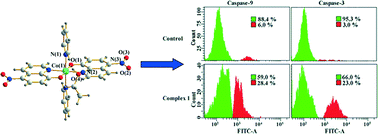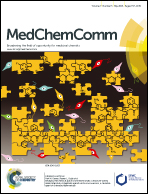Abstract
Three cobalt(II) complexes, [Co(NOQ)2(C5H5N)2]C2H5OH (1), [Co(BrQ)2(C5H5N)2] (2) and [Co(NQ)2(C5H5N)2] (3) (NOQ = 5-nitro-8-hydroxyquinoline, BrQ = 5-bromo-8-hydroxyquinoline, NHQ = 2-amino-8-hydroxyquinoline), were synthesized and characterized. Their in vitro cytotoxicity against T-24, BEL-7404, HepG2, HeLa, MGC-803, SKOV-3, HL-7702 and WI-38 cell lines was evaluated. Complexes 1–3 exhibited the highest proliferation inhibition activity against the T-24 tumor cell line with IC50 values in the range between 7.00 and 16.70 μM. They also displayed selectivity towards T-24 tumor cell lines compared to the normal liver cell line HL-7702 and human fetal lung fibroblast WI-38 cell line. The action mechanism of complex 1 was investigated. It caused apoptotic death of the T-24 cells via G1 cell cycle arrest. Further investigation revealed that complex 1 induced overproduction of reactive oxygen species, which led to mitochondrion-mediated apoptosis. DNA binding studies suggested that intercalation might be the most probable binding mode of the Co(II) complexes with ct-DNA.


 Please wait while we load your content...
Please wait while we load your content...